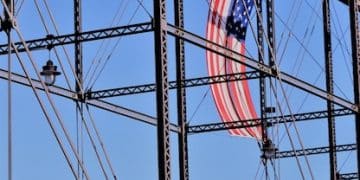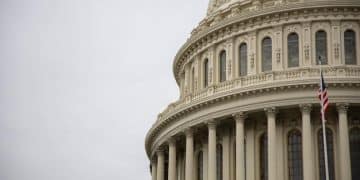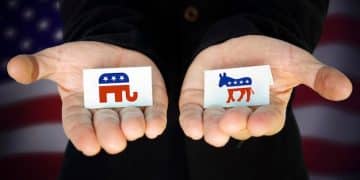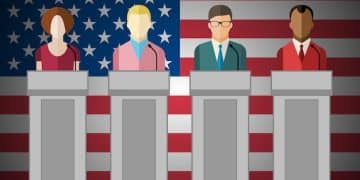The Future of the Filibuster: Senate Rule Changes & Policy Initiatives
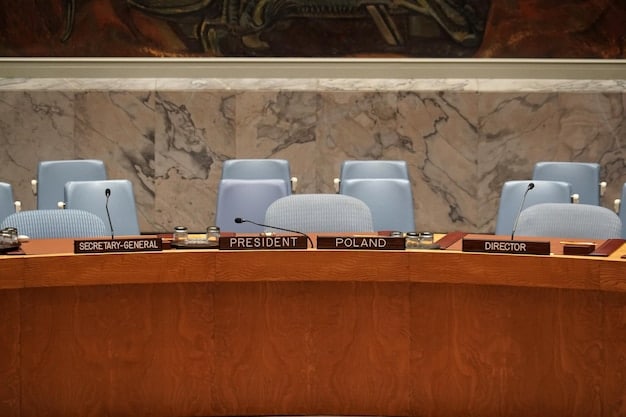
The future of the filibuster in the U.S. Senate is under scrutiny as debates intensify on whether rule changes can effectively break legislative gridlock and facilitate the passage of key policy initiatives, potentially altering the balance of power and legislative outcomes.
The **future of the filibuster** in the United States Senate remains a hotly debated topic, with many questioning whether changes to this long-standing rule are necessary to overcome legislative gridlock and enact significant policy changes.
Understanding the Filibuster: A Historical Overview
The filibuster, a procedural tactic used in the United States Senate, has a long and complex history. Understanding its origins and evolution is crucial to grasping the current debates surrounding its use and potential reform.
The Birth of the Filibuster
The filibuster emerged somewhat unintentionally from early Senate rules. Originally, senators could use dilatory tactics to delay or block a vote on a bill. This practice gradually evolved into what we now know as the filibuster.
Key Moments in Filibuster History
Over the years, there have been several notable instances where the filibuster played a pivotal role in shaping legislation, often leading to intense political battles and compromises.
- Civil Rights Era: The filibuster was infamously used to obstruct civil rights legislation, requiring significant effort to overcome.
- Cloture Rule: The introduction of the cloture rule, requiring a supermajority to end debate, was a direct response to filibuster abuse.
- Modern Usage: In recent decades, the filibuster has become increasingly common, contributing to legislative gridlock on a wide range of issues.
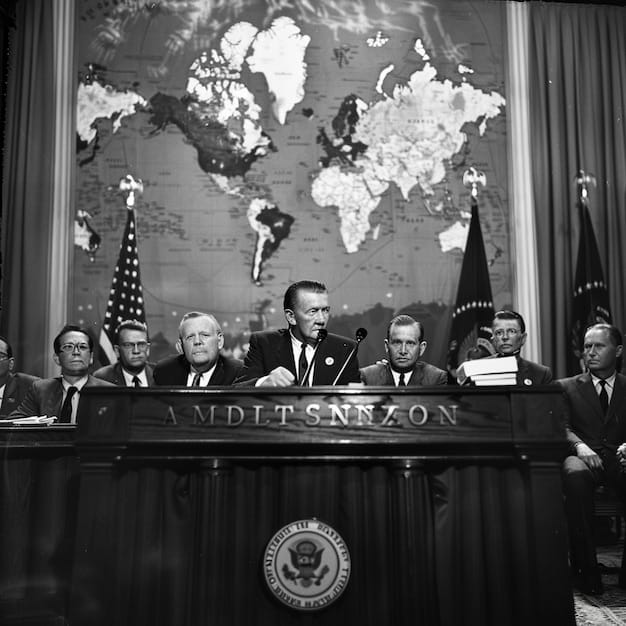
The filibuster’s historical usage reflects a continuous tension between the rights of the minority and the need for effective governance. Understanding this history is essential for evaluating proposed reforms and their potential impact on the Senate.
The Current State of the Filibuster
In today’s political climate, the filibuster remains a central point of contention. Its frequent use has led to significant challenges in passing legislation and addressing pressing national issues.
Increased Use of the Filibuster
The modern Senate has seen a dramatic increase in the use of the filibuster, with nearly every major piece of legislation requiring a supermajority vote to overcome procedural hurdles.
Impact on Legislative Productivity
This frequent use of the filibuster has significantly slowed down the legislative process, making it more difficult to address critical issues such as healthcare, immigration, and climate change.
The implications of the current state of the filibuster are far-reaching, impacting not only the legislative agenda but also the public’s trust in government. Addressing these challenges requires a careful consideration of potential reforms and their consequences.
Arguments for Maintaining the Filibuster
Despite the criticisms, there are compelling arguments for preserving the filibuster in its current form. Proponents emphasize its role in protecting minority rights and promoting thoughtful deliberation.
Protecting Minority Rights
One of the primary arguments for maintaining the filibuster is that it safeguards the rights of the minority party, preventing the majority from steamrolling unpopular or poorly considered legislation.
Promoting Deliberation and Compromise
Advocates also argue that the filibuster encourages senators to engage in more meaningful debate and seek bipartisan compromise, leading to better policy outcomes.
While the filibuster may sometimes hinder legislative progress, its supporters maintain that it is a vital check on the power of the majority and a catalyst for more thoughtful and inclusive policymaking.
Arguments Against the Filibuster
Critics of the filibuster argue that it is an outdated and undemocratic tool that obstructs the will of the majority and contributes to legislative dysfunction.
Obstructing the Will of the Majority
Opponents contend that the filibuster allows a minority of senators to block legislation supported by a majority of the population, undermining democratic principles.
Contributing to Legislative Dysfunction
The filibuster is also blamed for contributing to the gridlock and polarization that characterize modern American politics, making it difficult to address urgent national problems.
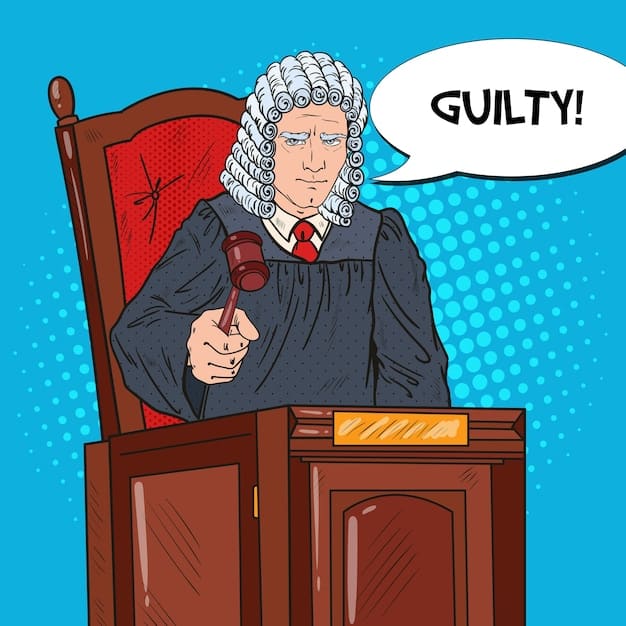
The arguments against the filibuster highlight the need for reform to ensure that the Senate can effectively address the challenges facing the nation and respond to the needs of the American people.
Potential Filibuster Reforms
Given the ongoing debate, various reforms have been proposed to address the perceived shortcomings of the filibuster while preserving some of its essential functions.
Lowering the Cloture Threshold
One option is to reduce the number of votes needed to invoke cloture, making it easier to end debate and move legislation forward. This could strike a balance between protecting minority rights and preventing obstruction.
Requiring a “Talking Filibuster”
Another proposal is to require senators to physically hold the floor and speak continuously in order to maintain a filibuster, as opposed to simply announcing their intention to block a vote.
Eliminating the Filibuster Entirely
The most radical reform would be to eliminate the filibuster altogether, allowing legislation to pass with a simple majority vote. This would streamline the legislative process but could also raise concerns about the rights of the minority.
Each of these potential reforms has its own set of advantages and disadvantages, and the ultimate choice will depend on a careful weighing of competing values and priorities.
The Political Feasibility of Reform
Implementing any filibuster reform will require significant political will and consensus-building. The deeply divided nature of American politics makes this a challenging task.
Obstacles to Reform
Several factors could impede efforts to reform the filibuster, including partisan polarization, institutional inertia, and the reluctance of some senators to cede power.
Potential Paths Forward
Despite these obstacles, there are potential paths forward, such as building bipartisan coalitions, leveraging public pressure, and capitalizing on moments of crisis or opportunity.
The political feasibility of filibuster reform will depend on the ability of lawmakers to bridge divides, overcome resistance, and demonstrate the necessity of change to their constituents and colleagues.
| Key Point | Brief Description |
|---|---|
| 📜 Historical Usage | The filibuster has been used since the early Senate days, evolving from delaying tactics. |
| ⚖️ Minority Rights | Proponents argue it protects minority rights from majority overreach. |
| 🚧 Legislative Gridlock | Critics say it causes gridlock, obstructing the passage of necessary legislation. |
| 🛠️ Potential Reforms | Reforms include lowering the cloture threshold and requiring a “talking filibuster.” |
Frequently Asked Questions
▼
The filibuster is a procedural tactic used in the U.S. Senate to delay or block a vote on a bill or other measure. It involves prolonged debate and other delaying actions by one or more senators.
▼
The filibuster is controversial because it can obstruct the will of the majority and lead to legislative gridlock. Critics argue it is an undemocratic tool that hinders progress on important issues.
▼
The filibuster can be ended by invoking cloture, which requires a supermajority vote (typically 60 senators) to limit debate and proceed to a vote on the measure.
▼
Proposed reforms include lowering the cloture threshold, requiring a “talking filibuster,” and eliminating the filibuster entirely. Each reform aims to balance minority rights with legislative efficiency.
▼
The political feasibility of filibuster reform is challenging due to partisan polarization and institutional inertia. However, bipartisan coalitions and public pressure could create opportunities for change.
Conclusion
The **future of the filibuster** remains uncertain, with ongoing debates about its role in the Senate and its impact on legislative effectiveness. As discussions continue, lawmakers must weigh the competing values of minority rights, democratic principles, and the need for responsive government to determine the best path forward.

